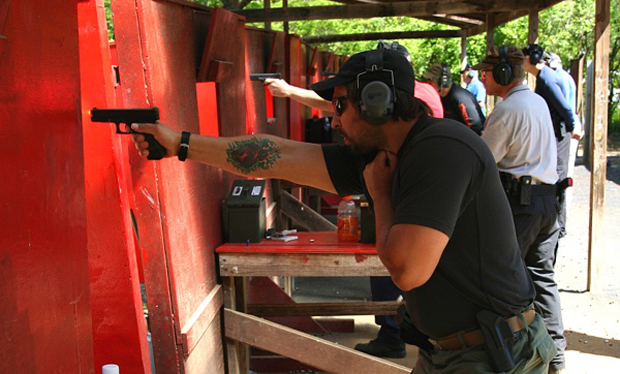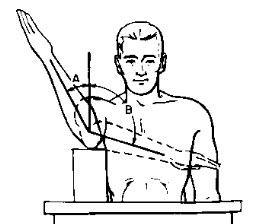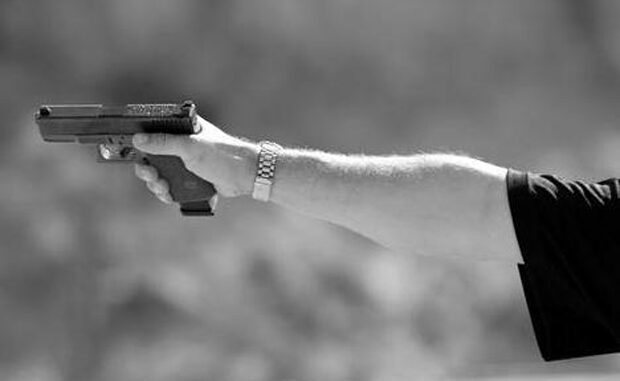By Defensive Daddy. Republished with permission from Growing Up Guns
This is a short post about pistol shooting technique. One of my readers noticed that I was using a traditional strict vertical one handed shooting technique. Like most things, it’s been a work in progress. Here’s my reasoning for using a more traditional vertical hold instead of a more canted ‘high speed’ one handed technique.
I was taught during my first firearms class (Fighting Pistol – Tactical Response) that a good way to shoot one handed (strong hand) was have the slide of the gun canted slightly inboard while shooting. Think of throwing a cross in boxing. The hand is unwinding and the fist is about 15 degrees from vertical. It definitely feels more natural and is more comfortable to do this. It also can be pretty repeatable as you ride the recoil between shots, though I feel like I have to steer the gun a bit to get it to return to my original point of aim. More so the larger the caliber gets (physics, duh). The shot impulse is absorbed in the shoulder and triceps.
Within the last two years, based on recommendations from The Tactical Professor I started trying the more traditional ‘up and down’ slide when one handed shooting. It has definitely felt more stable and the gun cycles in a more predictable path, requiring less ‘muscling’ of the gun during recoil. It also is more congruent with my method of pressing the gun out after the retention position of my draw stroke. The muzzle comes horizontal and under the dominant eye early and rises up and out from there. The engineer in me was curious why this method seems to feel more stable.
 Vertical One Handed Shooting
Vertical One Handed Shooting
I was reading Becoming a Supple Leopard which is a fantastic book about bio-mechanics as they relate to functional movement and sports. The part that grabbed my attention was regarding the shoulder and creating stability in the shoulder joint and I had sort of an epiphany.

Full vertical at Rogers Shooting School
The best way to tie the shoulder and humerus together is to externally rotate the humerus, thus winding up the ligaments of the shoulder. Kelly Starrett demos this by winding a rag around the end of a mop handle, which is a good visual. The more you rotate the broom, the tighter the rag gets. This is why we try to ‘bend the bar’ during bench press. This protects and stabilizes the shoulder. So my thinking is that the winding up of the shoulder ties the arm to the torso and stiffens that connection to remove degrees of freedom from the recoil impulse. This makes for a more repeatable recoil path.

It also happens to be a more traditional way to shoot one handed (as you probably know). I haven’t made my mind up on my favorite method. I tend to lean towards the vertical method, even though it bucks the current fashion of a ‘half gansta’ type hold. The true test is to put both on a timer and let the data speak for itself, which I admit I haven’t done. This is a subtle and probably trivial thing, but it’s the kind of thing that keeps me interested.
Note: For weak handed shooting, a slight cant is needed to bring the sights across to the dominant eye.
Remember, this isn’t THE way, only A way. You get to make the decision for yourself, which is nice.
What’s your favorite technique?
Why?
I seriously am curious. Let me know what you do and why. Thanks for reading.
Protect the Brood,
Defensive Daddy

